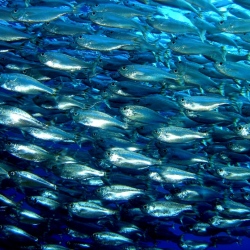
Researchers from the University of Houston have found a catalyst, cobalt oxide nanoparticles, that can quickly generate hydrogen from water using sunlight, potentially creating a clean and renewable source of energy.
Photocatalytic water-splitting experiments have been tried since the 1970s, but this was the first to use cobalt oxide and the first to use neutral water under visible light at a high energy conversion efficiency without co-catalysts or sacrificial chemicals, said Jiming Bao, lead author of their paper in Nature Nanotechnology and an assistant professor in the Department of Electrical and Computer Engineering at UH.
Researchers prepared the nanoparticles in two ways: using femtosecond laser ablation (removal of material from the surface of an object) and through mechanical ball milling. Different sources of light were used, ranging from a laser to white light simulating the solar spectrum. He said he would expect the reaction to work equally well using natural sunlight.
Once the nanoparticles are added to water and light is applied, the water separates into hydrogen and oxygen almost immediately, producing twice as much hydrogen as oxygen, as expected from the 2:1 hydrogen to oxygen ratio in H2O water molecules, Bao said.
The experiment has potential as a source of renewable fuel, but at a solar-to-hydrogen efficiency rate of around 5 percent, the conversion rate is still too low to be commercially viable. Bao suggested a more feasible efficiency rate would be about 10 percent, meaning that 10 percent of the incident solar energy will be converted to hydrogen chemical energy by the process.
